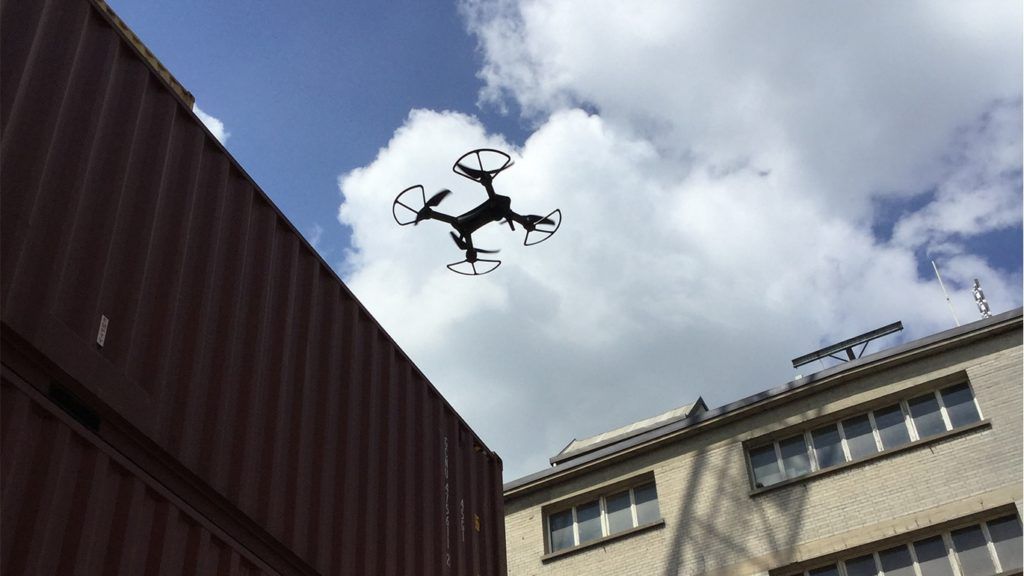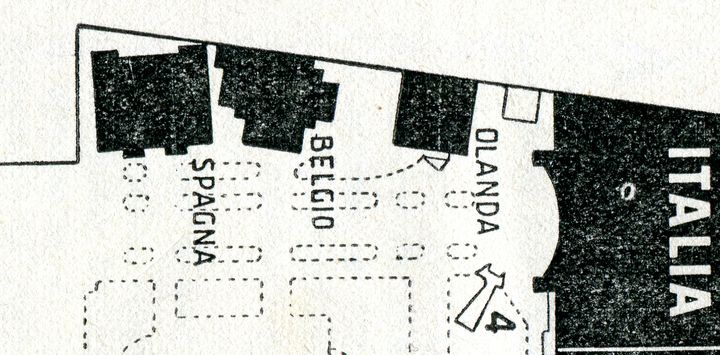The drone’s coming of age
During the nineties, the unmanned aerial vehicle (UAV), or drone, did not interest military strategists nor espionage agency directors. Drones were used marginally in different forms since World War I until the Vietnam war, mostly for spying and as decoys. It was considered a legally problematic curiosity of low strategic value, which could only serve as a reconnaissance and espionage vehicle. Its luck changed after the attacks of September 11th, 2001 since, coincidentally and shortly before that ominous date, experiments in equipping Predator drones with Hellfire missiles (laser directed anti-tank explosives that can shred human bodies to bits) had begun. Until then, however, military commanders could not imagine in what type of conflicts such weapons would be used. Bush and Cheney’s War on Terror offered the ideal stage to test these resources in execution missions against Al Qaeda leaders and militants. This was a war without battlefronts against an enemy that was not a national state, one that possessed neither aerial forces nor ground-to-air defenses. This way, neither pilot nor personnel were put at risk; major precision and minimal cost were obtained in comparison to smart bombs. Thus, the drone became the emblem of a new war that George Bush Jr’s regime wanted to fight: a paradoxical pacifying weapon, a patient and infallible vehicle that always eliminates villains, takes no hostages, and arrests no combatants; a robotized vigilante instilling respect and fear. The drone emerges as an armed, all-seeing, eye in the sky that never blinks, nor tires, nor becomes distracted. And there’s more, as the drone is, ironically, blind like justice—because even though it can “see,” it only does so by proxy, with human eyes interpreting the images and data it registers and by recognizing pattern.
For decades we have become accustomed to a state of permanent surveillance within cities through the proliferation of surveillance and closed circuit cameras, which monitor public and private spaces. Later on, the Internet also became a medium of domestic and international espionage, a virtual territory where our tracks could not be erased. Smartphones have added millions of new spying eyes, stalking and registering any human behavior or activity in any context, environment, and time. By now it has become absolutely clear that the devices we carry everywhere keep track of our habits and routines for the benefit of corporations that trade our information— aside from the fact that in any confrontation, accident, or unusual situation there are invariably curious bystanders ready to point and shoot with their portable phone cameras to post and publicize. The military drone, with its dozens of cameras, came to spread the notion of the world as a Panopticon, by filming in the most remote and inaccessible of places and, in this fashion, proving that no one, in any place, was safe from being spied on.
From techno anarchy to cyber docility
The cyberpunk era is characterized by decentralization of power, fluid identities, and the possibility of simultaneously inhabiting a digital domain and a flesh and bone one. It is a time of techno anarchy, where everything comes into fusion and collision: the modern and the classic, the planetary and the provincial, the corny and the brutal. Cyberpunk is postmodernism plus technology, and it speaks of a time in which, “The street finds its own uses for things,” as William Gibson wrote in Burning Chrome (1982). Yet, from the time of cybernetic punk we slide into an era of nerd “empowerment,” of FoMo (Fear of Missing Out), of high technology glamorization, and of the illusion of participating in important world events simply by manifesting opinions on social networks. The Internet stopped channeling liberal desires and transformed from a place of social gathering and query, to one of harassment, disinformation, cunning seduction, and impulse buying.
Cyberpunk was a prodigious cultural petri dish during a time in which ideologies were proclaimed dead. It was a territory of skepticism and complaint, of contradictory signs of optimism and dread, of faith in the adoption of innovative devices, and disenchantment over saturation and
increasing corporatization. Its apex has come about at a confusing time in which we are passing from an economy of product scarcity to one of overabundance and excess. Cyberpunk coincided with the beginnings of internet’s massification, as though those narratives had invoked that formidable planetary communications platform. Despite all of its benefits, the Internet offered us a dangerous utopia where paying for the creative labor of others is not considered necessary, such that we accept appropriation, plagiarism, and copying of other peoples’ work without remorse or restrictions. It took us a couple of decades, to understand the meaning behind the dreadful consequences of the devaluation of creativity, art, and ideas in Cyberspace thought circulated freely and was shared with voracity—but, in not having established efficient models of redistribution of intellectual production, large corporations eventually found a means of exploiting others’ ingenuity, of converting our identities into merchandise or, rather, into “content”, and turning us into customers of a strange economy (Gig) dominated by service enterprises that produce nothing, such as Facebook, Twitter, Uber, and Airbnb, but that accumulate and control trade and resources to their benefit, generating billions of dollars. From the era of media diversification, multiplication of voices and platforms, aperture to all types of discourse, horizontality of communication, and an opportunity of all to express themselves and be heard, we have reached an era of monopolies, control over manners of expression, cultural chiefdoms, fees, subscriptions, numerous new artificial necessities, surveillance, and industries of information at the service of, or at least in compliance with, powers of states, oligarchies, corporations and even mafias. All of this without considering the numerous and growing threats of hacking (private and state), sabotage, theft of resources, and identities.
Drone World
The specter of technology races across the world at top speed, changing the cultural landscape wherever it passes, shaking up economies, provoking social crises and moral dilemmas, sowing unemployment, creating new jobs, spawning instant billionaires, and establishing new dominions of production, knowledge and misinformation. We can almost dare to declare that we are no longer the same species that walked around the Earth without a cellphone, without headphones, or at least a GPS with which to orient itself. Our technological dependency is neither passing, nor frivolous, nor irrelevant; rather, it has transformed us into distracted beings, hyper informed, versatile, selfish, and, at the same time, conscious of the ills of the world like never before; in a way, we have become biological drones, aware and absent. We navigate, share, and make decisions with tools controlled remotely by corporations of ambitions and interests that are different, and, at times antagonistic, to our own. We can believe that the cybernetic revolution came to illuminate us, to eliminate prejudice, and eradicate taboos. There is some truth in that. However, technological ideals have changed in three decades, and while on one hand there are some who dream of creating free encyclopedias, developing resources to defend human rights, or providing free internet access to all of Earth’s inhabitants, there are others who have concentrated their efforts in making efficient systems to classify us, subject us to an unprecedented control, and exploit our weaknesses, while still others manufacture precise, infallible machines that kill from a distance.
This is the era of the drone, which is much more than a machine of aggression or espionage, as it can also be a tool for science, for exploration and rescue, a system of taxis or transportation of goods, as well as an art tool, a device of telepresence, and a splendid toy for the imagination. In a similar manner to the events of personal computing, the drone gave way to a euphoric epidemic that in a few years has become a popular obsession among thousands of people who use and construct drones, participate in specialized forums on the internet, organize meetings, establish enterprises dedicated to their sale and distribution, and create competitions and races. The Predator drone was born in a Californian garage. Amateurs and enthusiasts had again surpassed professionals in exploring the most heterodox of uses that can be given to a flying, remote control machine, and changing it into a fascinating corporal extension-extremity. The drone offers an expansion of computational experience in the material world, permitting interaction with the environment, filming and delivering the point of view of a videogame protagonist in the physical world. It is inevitable, the robotized drone has become part of our day-to-day life. Drones come in an immense variety of size and function. From jumbo jet sized planes to miniatures the size of an insect. Some have multiple rotors, jet turbines; the most common military ones, with propellers and smaller engines. Presently, when speaking of drones we instantly imagine aircraft, but there are terrestrial, aquatic, and submarine drones. The word drone comes from the sound or buzz that certain UAV models make, mimicking male bees (drones), but the word drone has at our time become almost synonymous with spy robot with assassination capabilities.
The legacy of the movies Blade Runner, Terminator, and Alien, is having familiarized us with the weaponized drone, a technology we have assimilated as the first step in the militarization of artificial intelligences. This is a dangerous proposal, given that, independently from the hypothetical fear that an eventual singularity may take place (in which machines suddenly acquire
consciousness and turn against us, like in so many technophobic fictions), relegating life and death decisions to algorithms represents, at least for now, a misguided and sordid illusion of security that surely will place notions of efficiency and cost in opposition with fundamental humanitarian values.
[i] This is a Fragment of Drone Visions. A brief Cyberpunk History of Killing Machines (Hyperbole Books, an imprint of San Diego University State Press, 2020) a book about the fantasies, science fiction narratives and illusions that made acceptable and normalized the notion of automated or intelligent killing machines.
Naief Yehya, Industrial engineer, journalist, writer, and cultural critic. He has published three novels, three short stories collections, and the essays: The Transformed Body. Cyborgs and our Technological Heritage in the Real World and Science Fiction, War and Propaganda. Mass Media and the Myth of War in the US,and, Pornography, Technoculture, The Intimate Space Transformed in Times of War and Peace, and Pornculture. Yehya’s work deals mainly with the impact of technology, mass media, propaganda and pornography in culture and society. Yehya was born in Mexico City and has lived in Brooklyn since 1992.



